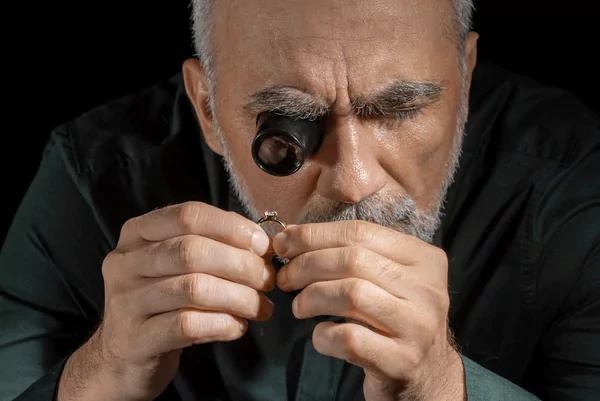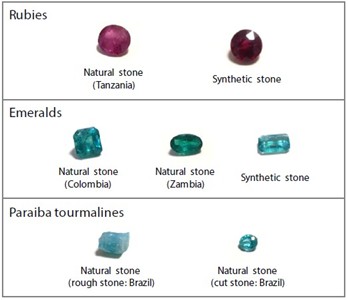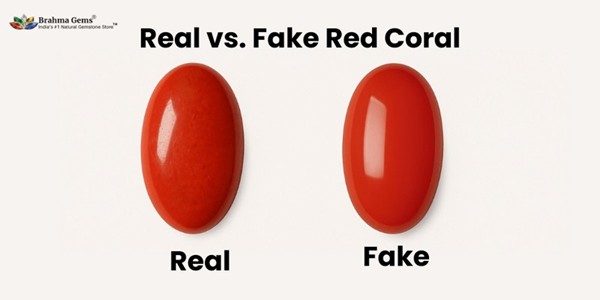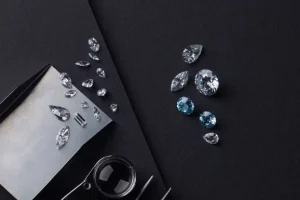
How to Identify Real and Fake Gemstones?
- Posted by 3.0 University
- Categories Gemology
- Date May 14, 2025
- Comments 0 comment
Gemstone Identification
Given the abundance of options in the gemstone market today—from genuine stones to quite beautiful fakes—it is essential to know how to distinguish a real gemstone.
Knowing a real stone from a fake one will enable you to appreciate your gems more and make prudent decisions if you’re just starting off.
Examining the gemstone closely—its color and how it feels—allows one to learn a great deal about whether it is the real thing, like when one compares actual and synthetic red coral in [referenced image].
Furthermore, just handling a stone might reveal important hints, much like the technique applied to ascertain whether jade is authentic in the picture.
Here is a look at the Gemstone hardness test.
Doing tests like the hardness test may really help you get a sense of how strong a stone is and whether it came from the ground if you wish to get even more at it.
Thus, having a good technique to assess gemstones can improve your collector’s ability and increase your respect of these natural beauties.
Understanding the Characteristics of Real Gemstones
As the market for gemstones and their replicas expands, it becomes more important to be able to tell real from fake stones.
Real gemstones often have inclusions, or inherent flaws. [referenced image] might show, for instance, the textural and color variations between real and fake red coral.
However, it’s worth remembering that natural stones often have unique characteristics that synthetic versions simply cannot replicate. Moreover, assessing a gemstone’s hardness is another way to tell them apart.
As a beginner’s guide to gemstone identification suggests, both visual inspection and hands-on tests like the Mohs hardness scale are essential.
This scale measures a gemstone’s scratch resistance, potentially providing conclusive evidence of authenticity.
Therefore, understanding these key characteristics emphasizes the value of careful examination.
With all these points in mind, it allows one to develop an informed perspective regarding how to identify real vs. fake gemstones effectively while navigating the intricacies of the market and the science behind it all.
Common Methods for Testing Gemstone Authenticity
Regarding distinguishing actual gemstones from fakes, there are several approaches that would be helpful for professionals as well as beginners.
The Mohs scale is used in the hardness test, an essential one.
This test lets you know a stone’s scratch resistance. If you had a true ruby, for instance, it should score a 9 on this scale and stand out from the softer fakes.
You then have more scientific approaches include energy-dispersive X-ray fluorescence (EDXRF).
This kind of study examines the chemical composition of the stone rather directly.
EDXRF tells you whether a gemstone has been treated in any way that might affect its value; it does not harm the stone as we have mentioned.
We should also keep in mind the need of closely looking over the stones.
Comparisons, like in [cited table] with real and fake coral, can help you quickly spot differences in color and texture.
So, all these different approaches together are super helpful in learning how to identify gemstones, making it easier to tell what’s real and what isn’t.
Method | Description | Applications | Advantages | Limitations |
Energy-Dispersive X-ray Fluorescence (EDXRF) | A non-destructive technique that analyzes the elemental composition of gemstones by measuring the characteristic X-rays emitted from the sample when exposed to high-energy X-rays. | Identifying treatments such as lead glass filling in rubies, detecting color-enhancing coatings, and determining geographic origin. | Rapid data acquisition, ease of use, and fully non-destructive analysis. | Lower sensitivity for light elements and trace elements compared to other methods. |
Laser Ablation–Inductively Coupled Plasma–Mass Spectrometry (LA-ICP-MS) | A minimally destructive technique that uses a laser to ablate a small portion of the gemstone, which is then analyzed to determine its precise chemical composition. | Detecting treatments like beryllium diffusion in sapphires, determining geographic origin, and distinguishing between natural and synthetic gems. | High sensitivity for trace elements, capable of detecting a wide range of elements including light ones. | Requires minimal sampling, which may not be suitable for all gemstones. |
Raman Spectroscopy | A non-destructive technique that uses laser light to measure the vibrational modes of molecules within a gemstone, providing a unique spectral fingerprint. | Identifying mineral inclusions, distinguishing between natural and synthetic gems, and determining gemstone provenance. | Non-destructive and capable of analyzing inclusions without sample preparation. | May require reference spectra for accurate identification and can be less effective for certain materials. |
Fourier Transform Infrared Spectroscopy (FTIR) | A technique that measures the absorption of infrared light by a gemstone to identify molecular compositions and detect treatments. | Detecting treatments such as polymer impregnation in jadeite, distinguishing between natural and synthetic gems, and identifying heat treatment in sapphires. | Non-destructive and effective for identifying organic compounds and certain treatments. | Less effective for detecting inorganic treatments and may require complementary techniques for comprehensive analysis. |
Common Methods for Testing Gemstone Authenticity
Practical Gemstone Identification Tips for Beginners
Learning the intricacies of gemstone identification enriches one’s understanding and fondness for these natural wonders. A good starting point for newcomers involves a structured methodology, first focusing on color, transparency, and the way the gem is cut.
Moreover, doing practical tests like the hardness assessment helps to separate real jewels from synthetic ones.
For instance, a Mohs hardness of 9 for rubies demonstrates their resistance to scratches from common things, therefore confirming their legitimacy.
Analyzing the behavior of light—its direction and reflection—can also draw attention to important variations between real and fake gemstones, a subject well-covered in the [referenced picture], which compares several stones using visual examples.
These kinds of visual tools are a great way to boost knowledge of gemstone traits and are thus very helpful in this interesting field.
By sticking to these basic guidelines, beginners can build their confidence in spotting real gemstones from replicas.

Image2. Comparison of Gemstones: Rubies, Emeralds, and Paraiba Tourmalines
Conclusion
For individuals exploring the fascinating field of gemstones, it is quite important to be able to separate actual items from replicas.
Learning such things enhances the buying and enjoying experience tremendously.
Simple yet effective methods, like assessing a gemstone’s hardness, are invaluable for gauging authenticity.
Visual comparisons—take the [cited image], for instance—can reveal the telltale signs distinguishing real from fake gemstones, a crucial point for the uninitiated buyer.
How to identify real vs fake gemstones?
A good gemstone identification guide will give beginners essential tips, encompassing more than just how it looks on the surface, like judging how deep the color is and what the texture is like.
Such a well-rounded approach will make you appreciate real gemstones more and protect buyers from getting tricked in what is a pretty tricky marketplace.
The image is a Real vs fake gemstone test. Ultimately, gaining an understanding of how to tell real from fake gemstones will make your gemology journey way more rewarding and informed, not to mention more empowering.

Image3. Comparison of Real and Fake Red Coral Gemstones
3.0 University has partnered with IIG to offer niche courses in Jewellery Design, Gemology, and Diamonds, providing real-time hands-on industry experience under the guidance of mentors and industry experts.
You may also like

